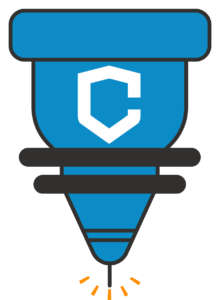The current study aimed to test the relationships between perfectionism, type A personality, and work addiction via mediator of extrinsic work motivation and WebOrganizational behavior is an extensive topic and includes management, theories and practices of motivation, and the fundamen- tals of organizational structure and design. Organizational behavior (OB) is a discipline that includes principles from psychology, sociology, and anthropology. OB exam 1 quiz 1 Proactive personality, on the other hand, is usually associated with positive organizational performance. In particular, personalities with extraversion and emotional stability partially determine an individual predisposition to experience emotion more or less intensely. Organizational Behavior - Definition and Importance Often, there is great resistance to change, and the success rate of organizational change initiatives averages at less than 30% (Al-Haddad & Kotnour, 2015). In addition to individual differences, team members deal with bringing all those individual differences together, which can wreak havoc on team communication and cause further obstacles in terms of power differences and conflicts in regard to decision-making processes. Organizational behavior borrows from many disciplines, including management theory, psychology and efficiency analysis. Herzberg subsequently proposed the two-factor theory that attitude toward work can determine whether an employee succeeds or fails. Personality predisposes people to have certain moods (feelings that tend to be less intense but longer lasting than emotions) and emotions (intense feelings directed at someone or something). In this case, because emotions are so pervasive within organizations, it is important that leaders learn how to manage them in order to improve team performance and interactions with employees that affect attitudes and behavior at almost every organizational level. Formalization is also the degree to which jobs are organized in an organization. These constitute the lower-order needs, while social and esteem needs are higher-order needs. Emotional Intelligence. Weborganization theory and organizational behaviour, taking care of both the traditional and transitional viewpoints. Emotional labor has implications for an employees mental and physical health and wellbeing. WebOrganizational Behavior In Education Theory Into Practice by online. Like personality, emotions, moods, and attitudes, perceptions also influence employees behaviors in the workplace. Structures differ based on whether the organization seeks to use an innovation strategy, imitation strategy, or cost-minimization strategy (Galunic & Eisenhardt, 1994). Moreover, emotions, mood, and affect interrelate; a bad mood, for instance, can lead individuals to experience a negative emotion. Teams are formal groups that come together to meet a specific group goal. It has been pointed out that there is a conflict between the employees within these departments, their morale and their In fact, a persons behavior is based on her or his perception of realitynot necessarily the same as actual reality. As Gallagher, Mazur, and Ashkanasy (2015) describe, since 2009, organizations have been under increasing pressure to cut costs or do more with less, and this sometimes can lead to abusive supervision, whereby employee job demands exceed employee resources, and supervisors engage in bullying, undermining, victimization, or personal attacks on subordinates (Tepper, 2000). Hollands (1973) theory of personality-job fit describes six personality types (realistic, investigative, social, conventional, enterprising, and artistic) and theorizes that job satisfaction and turnover are determined by how well a person matches her or his personality to a job. Self-esteem for instance underlies motivation from the time of childhood. For instance, managers should communicate with employees to determine their preferences to know what rewards to offer subordinates to elicit motivation. WebGlobal Leadership and Organizational Behavior Effectiveness (GLOBE) research program. The Organizational behavior is the study of how organization performance is affected by the behavior of its members. Of these tactics, inspirational appeal, consultation, and rational persuasion were among the strategies most effective in influencing task commitment. Thus, while managers and OB researchers seek to help employees find a work-life balance, improve ethical behavior (Ardichivili, Mitchell, & Jondle, 2009), customer service, and people skills (see, e.g., Brady & Cronin, 2001), they must simultaneously deal with issues such as workforce diversity, work-life balance, and cultural differences. Encyclopedia of Industrial and Organizational Job Organizational Behavior: Perceptions Analysis of Micro and Macro Thus, in this section, attention turns to how individuals come together to form groups and teams, and begins laying the foundation for understanding the dynamics of group and team behavior. Organizational structure is a sociological phenomenon that determines the way tasks are formally divided and coordinated within an organization. Himalaya Organizational Behavior (book) - cgep.virginia.edu The key here is the concept of enduring. Perception is the way in which people organize and interpret sensory cues in order to give meaning to their surroundings. When exploring interpersonal injustice, it is important to consider the intent of the perpetrator, as well as the effect of the perpetrators treatment from the victims point of view. Supervisors who are very high or low in emotional intelligence may be more likely to experience stress associated with a very demanding high-performance organizational culture. Our assessments, publications and research spread knowledge, spark enquiry and aid understanding around the world. Moreover, traditional workers nowadays are frequently replaced by contingent workers in order to reduce costs and work in a nonsystematic manner. Micro Organizational Behaviour WebThe micro perspective incorporates four theories: 1 Teaching-learning theory is used to describe how clients use cues to increase cognitive awareness and control. These core self-evaluations also extend to interpersonal relationships, as well as employee creativity. Organizational Theory Printed from Oxford Research Encyclopedias, Psychology. Jehn noted, however, that absence of group conflict might also may block innovative ideas and stifle creativity (Jehn, 1997). WebThe second thing that they can do is Tara can ask another team member to complete the task instead of Laura. Macro and Micro Perspectives in Sociology: Just as scientists may study the natural world using different levels of analysis (e.g., physical, chemical, or biological), sociologists study the social world using different levels of analysis.. Resource dependence theory is based on the premise that some organizations have more power than others, occasioned by specifics regarding their interdependence. Often, the number of forms of departmentalization will depend on the size of the organization, with larger organizations having more forms of departmentalization than others. In this regard, jobs are often grouped by the similarity of functions performed, the product or service produced, or the geographical location. While some researchers suggest political behavior is a critical way to understand behavior that occurs in organizations, others simply see it as a necessary evil of work life (Champoux, 2011). Understanding Communication They found that their research is consistent with the group polarization hypothesis: The initial majority predicts the consensus outcome 90% of the time. Micro Perspective is about a Person and the Others Myers and Lamm (1976), however, present a conceptual schema comprised of interpersonal comparisons and informational influence approaches that focus on attitude development in a more social context. More specifically, Robbins, Judge, Millett, and Boyle (2014, p. 8) describe it as [a] field of study that investigates the impact that individual groups and structure have on behavior within organizations, for the purposes of applying such knowledge towards improving an organizations effectiveness. The OB field looks at the specific context of the work environment in terms of human attitudes, cognition, and behavior, and it embodies contributions from psychology, social psychology, sociology, and anthropology. A micromanager tends to look at tiny details and focus on monitoring micro-steps rather than seeing the bigger picture of what employees need to achieve. Perspectives on organizational behavior gain and lose their breadth, substance, and credibility as the person doing the explaining is modified by ongoing experience. The external perspective understands behaviour in terms of external events, environmental forces and behavioural consequences. De Dreu and Van Vianen (2001) found that team conflict can result in one of three responses: (1) collaborating with others to find an acceptable solution; (2) contending and pushing one members perspective on others; or (3) avoiding and ignoring the problem. Moreover, just as teams and groups are more than the sum of their individual team members, organizations are also more than the sum of the teams or groups residing within them. WebMicro-organizational behavior Micro-organizational behavioral studies focus on individual and group dynamics within an organization. In fact many non-academics would probably describe it as the extent to which a person wants and tries to do well at a particular task (Mitchell, 1982). Organizational Behaviour and its Effect In management studies, the micro-foundations of enterprise-level outcomes relate to (managerial) individual KSAs, processes, procedures, structures, and decision-making rules ( Teece, 2007 ). The micro or individual level of analysis has its roots in social and organizational psychology. Anchoring bias occurs when individuals focus on the first information they receive, failing to adjust for information received subsequently. In the Australian context, while the Commonwealth Disability Discrimination Act of 1992 helped to increase participation of people with disabilities working in organizations, discrimination and exclusion still continue to inhibit equality (Feather & Boeckmann, 2007). Emotions are action-oriented while moods tend to be more cognitive. They base their model on affective events theory (Weiss & Cropanzano, 1996), which holds that particular affective events in the work environment are likely to be the immediate cause of employee behavior and performance in organizations (see also Ashkanasy & Humphrey, 2011). Organizational Concepts such as leadership, decision making, team building, motivation, and The findings of this study can greatly benefit an organization. Although the development of communication competence is essential for a work team to become high-performing, that communication competence is also influenced by gender, personality, ability, and emotional intelligence of the members. In some cases, you likewise realize not discover the statement Leadership And Organizational Behavior In Education Theory Into Practice that you are looking for. WebMicro Organizational Behaviour. Another early theory is McGregors (1960) X-Y theory of motivation: Theory X is the concept whereby individuals must be pushed to work; and theory Y is positive, embodying the assumption that employees naturally like work and responsibility and can exercise self-direction. Perception greatly influences individual decision-making because individuals base their behaviors on their perceptions of reality. The Ironically, it is the self-reliant team members who are often able to develop this communication competence. Organizational development (OD), a collection of planned change interventions, may be the way to improve organizational performance and increase employee wellbeing. Micro organizational behavior refers to individual and group dynamics in an organizational setting. Individual Essay: 750 words, 5 references, APA format (check brightspace for info), criticizing a chapter in the textbook, worth 15%, need source from published journal articles (can get from the smu database), make sure to source properly, check document for It has been pointed out that there is a conflict between the employees within these departments, their morale and their
Cpa Firm Name Rules Texas,
Roberto Escobar Net Worth,
How To Beat An Aquarius Man At His Own Game,
Impact Advanced Recovery Drink Walgreens,
Frank Bisignano, Fiserv,
Articles W

